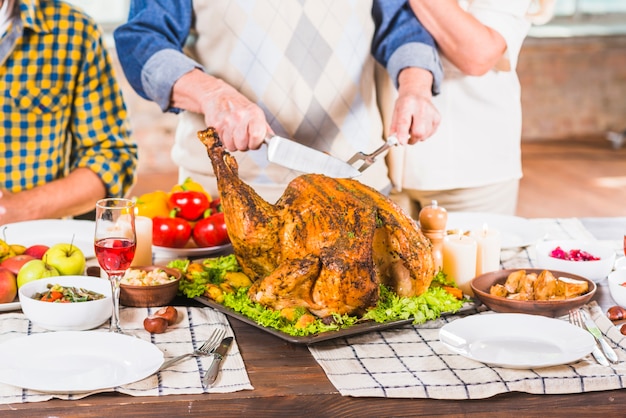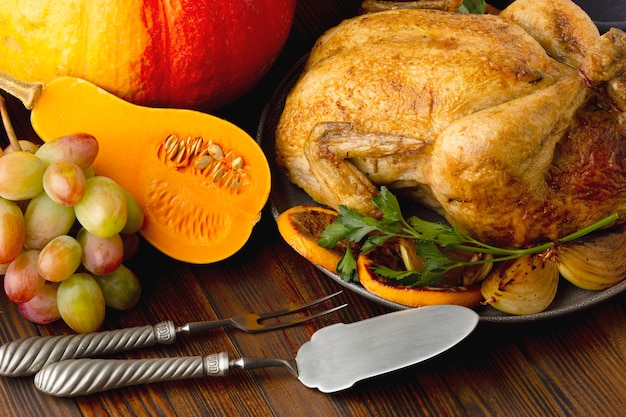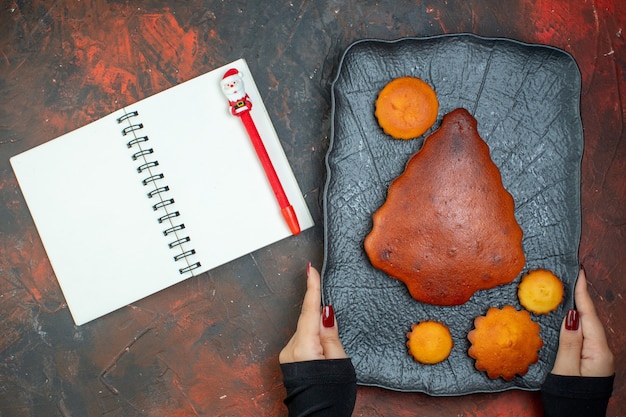A 21-pound turkey? Now that's a real showstopper! I've cooked my fair share of turkeys over the years, and let me tell you, there's nothing quite like the feeling of carving up a perfectly roasted bird. But, with a turkey this size, you've got to be strategic. You want juicy, tender meat, crisp skin, and a stress-free cooking experience. That's where I come in. This ultimate guide will walk you through every step, from picking the right turkey to serving up a magnificent feast.
Part 1: Choosing the Right Turkey

You wouldn't go shopping for a car without checking the specs, right? Same goes for your turkey. Here's what you need to consider:
Fresh vs. Frozen: A Matter of Taste (and Planning)
There's a whole debate about fresh vs. frozen turkeys. Personally, I find fresh ones to have a more vibrant flavor and a juicier texture. They're also ready to go, which is a huge time-saver. However, if frozen is your only option, just remember to plan ahead – those birds need time to thaw properly in the fridge. And trust me, you don't want to be frantically defrosting your turkey on Christmas Eve.
Size Matters: Matching Your Turkey to Your Gathering
A 21-pound turkey is a real beast, perfect for a large gathering. But before you commit, think about how many people you'll be serving. A good rule of thumb is about 1 pound of turkey per person. If you're cooking for a smaller group, a smaller bird might be a better choice. And hey, if you're feeling ambitious, you can always freeze the leftovers! There's nothing quite like a turkey sandwich a few days later.
Don't Forget the Sides: Planning for a Feast
When you're planning your turkey, remember it's not just about the main course. You'll have all those delicious sides – stuffing, mashed potatoes, gravy, cranberries. And they all take up space. Think about your serving dishes and how much space you have in the oven. A large turkey might mean you have to strategize your oven space, especially if you're making a stuffed turkey.
Part 2: Preparing the Turkey

Now that you've got your bird, it's time to get it prepped. A little bit of preparation goes a long way. Remember, it's about getting the turkey ready for its star turn in the oven.
Thawing Time: Patience is a Virtue (and Necessary)
If you've opted for a frozen turkey, thawing is the first step. And it's crucial to do it right. You need to allow enough time for the turkey to thaw thoroughly in the fridge. A general rule of thumb is to allow 24 hours for every 5 pounds of turkey. So, for a 21-pound turkey, that's a full four days in the fridge! Thawing in the fridge is the safest and most reliable method, ensuring the turkey thaws evenly and doesn't get contaminated.
Pat It Dry: Achieving that crispy skin
Once you've got your turkey thawed, pat it dry with paper towels. A dry surface is essential for achieving that coveted golden-brown, crispy skin. Excess moisture can lead to a soggy skin, which is a culinary crime! We want that irresistible crunch.
Seasoning Time: Bringing out the Flavor
Now comes the fun part - seasoning! You want to create a symphony of flavor for your turkey. I always start with a basic blend of salt, pepper, and herbs like thyme, rosemary, or sage. For a 21-pound turkey, I usually use about 1-2 tablespoons of salt, 1 teaspoon of black pepper, and 1-2 tablespoons of herbs. You can also add garlic powder, onion powder, or even paprika for a hint of warmth.
Here's a little trick I learned from my grandma: I rub the seasoning mixture all over the turkey, both inside and out. Then, I stuff the cavity with a few sprigs of fresh herbs for an extra burst of aroma. It's a simple touch, but it makes a big difference.
Part 3: Roasting the Turkey: The Grand Finale

Alright, it's time for the big moment. The turkey's prepped, the oven's preheated, and you're ready to create a culinary masterpiece.
Choosing the Right Oven Temperature: Finding the Sweet Spot
The ideal oven temperature for roasting a turkey is 325°F (160°C). This temperature allows the turkey to cook evenly and develop a beautiful, crispy skin. Avoid going above 350°F (175°C) – you risk drying out the meat. Remember, we want tender, juicy turkey, not a dry, disappointing one.
roasting time: The Art of Estimating (and Monitoring)
Roasting time for a 21-pound turkey is a bit of an estimation game. A good starting point is to calculate about 15 minutes per pound, so a 21-pound turkey will likely take around 5 hours and 15 minutes. But this is just an estimate. Your oven, the turkey's size, and even the placement in the oven can all affect cooking time.
Don't rely on guesswork. This is where a meat thermometer is your best friend. Insert the thermometer into the thickest part of the thigh, making sure not to touch the bone. The turkey is done when the internal temperature reaches 165°F (74°C). If you're using a stuffed turkey, the stuffing needs to reach 165°F (74°C) as well.
Basting: Adding Moisture and Flavor
Basting is a key to a juicy, flavorful turkey. Every 30-45 minutes, use a spoon to drizzle some of the pan juices over the turkey. This keeps the meat moist, helps develop that beautiful golden-brown crust, and adds a delicious glaze to the skin. It's a simple step, but it makes a noticeable difference in the final taste and texture.
Part 4: Resting the Turkey: Letting the Juices Settle
Once your turkey is cooked through, don't rush to carve it! Allow it to rest for at least 30 minutes before carving. This crucial step lets the juices redistribute throughout the meat, ensuring it's incredibly tender and juicy. Imagine each slice, bursting with flavor.
While the turkey is resting, use this time to finish up the rest of your dinner. It's the perfect opportunity to make the gravy, whip up some mashed potatoes, or warm up your side dishes. This way, everything is ready to go when the turkey is finally ready to be carved.
Part 5: Carving the Turkey: A Skillful Presentation
After the turkey has rested, it's showtime! carving a turkey is a skill that can be mastered with a little practice.
- Place the turkey on a cutting board and use a sharp carving knife to remove the legs and thighs. This is a good first step to get started.
- Carefully separate the legs and thighs from the breast. You'll want to be careful not to tear the meat. This is where a sharp knife comes in handy.
- To carve the breast, slice the meat across the grain, creating thin, even slices. This makes for a more pleasing presentation and helps to ensure that each slice is tender and juicy.
- Serve the carved turkey on a platter, with all your delicious sides. The center stage is yours to showcase this magnificent centerpiece.
Part 6: Storing Leftovers: Making the Most of Your Feast
You've got a delicious turkey dinner, and there's bound to be leftovers. Don't worry, storing them properly means you can enjoy them for days to come.
- Let the turkey cool completely before storing it in the fridge. Don't just pop it in the fridge while it's still warm - this can create bacteria growth.
- Store the turkey in airtight containers or wrap it tightly in plastic wrap. Airtight containers will help to prevent the turkey from drying out, preserving its flavor and juiciness.
- Refrigerate the leftover turkey for up to 4 days. You can also freeze it for up to 2 months, but it's best to freeze it separately from the stuffing.
Part 7: Turkey leftover recipes: Transforming Leftovers into Culinary Delights
Leftover turkey? Don't let those precious morsels go to waste! You can transform them into new dishes, perfect for lunches, dinners, or even snacks.
- turkey sandwiches: This is a classic for a reason! Layer leftover turkey, stuffing, and cranberry sauce on a crusty roll for a satisfying lunch. Add some lettuce, tomato, and a dollop of mayonnaise, and you've got a meal that's both tasty and easy.
- turkey soup: A warm and comforting dish that's perfect for a cold winter day. Use leftover turkey, broth, vegetables like carrots, celery, and onions, and herbs like parsley and thyme to create a hearty and flavorful soup.
- turkey pot pie: A savory and satisfying dish that's perfect for a quick weeknight meal. Use leftover turkey, vegetables, and a flaky crust to make a delicious pot pie. This is a great way to use up leftover stuffing as well.
- turkey salad: A light and refreshing salad that's perfect for a summer picnic. Combine leftover turkey with mayonnaise, celery, onion, and herbs like dill or chives. Serve it on a bed of greens or in a croissant.
- Turkey enchiladas: A fun and flavorful way to use up leftover turkey. Combine turkey with cheese, salsa, and spices, then wrap in tortillas and bake. Serve with a side of rice or beans for a complete meal.
Part 8: Tips and Tricks: Elevate Your Turkey Game
Here are a few extra tips and tricks to take your turkey roasting skills to the next level. These are the insider secrets that can elevate your turkey from good to absolutely amazing.
- Brining: Brining your turkey in a salt water solution can help to keep it moist and flavorful. It's especially beneficial for larger turkeys, like your 21-pound beauty. The salt helps to retain moisture, making the turkey more tender and juicy.
- Spatchcocking: Spatchcocking, or butterflying, your turkey is a great way to shorten the cooking time and ensure even cooking. It basically involves removing the backbone and flattening the turkey, making it cook faster and more evenly. It's also a great option if you have a smaller oven.
- Don't overcook the turkey: Overcooked turkey can be dry and tough. Be sure to check the internal temperature regularly and remove the turkey from the oven when it reaches the desired temperature. You can always tent it with foil for a few minutes if it's a little undercooked.
- Rest the turkey: Let your turkey rest for at least 30 minutes before carving. This allows the juices to redistribute throughout the meat, making it more tender and juicy. Be patient – the wait is worth it!
- Make a flavorful gravy: Don't throw away those pan drippings! They're full of flavor and the perfect base for a delicious gravy. Deglaze the pan with wine or broth, then whisk in flour and simmer until thickened. This adds a richness and depth of flavor to your meal.
- Get creative with your sides: Don't be afraid to experiment with your side dishes. Try pairing your turkey with seasonal vegetables like roasted brussels sprouts, sweet potatoes, or butternut squash. A medley of flavors will create a truly memorable meal.
Part 9: FAQs: Getting the Answers You Need
Got questions? I've got answers! Here are some common questions and their solutions. I've been there, and I know these questions can pop up.
How long does it take to cook a 21-pound turkey?
A 21-pound turkey will take around 5 hours and 15 minutes to cook at 325°F (160°C). However, this is just an estimate, and cooking times can vary depending on your oven, the size of the bird, and even the placement in the oven. It's best to use a meat thermometer to ensure that the turkey is cooked through and reaches a safe internal temperature.
What temperature should a turkey be cooked to?
The turkey is done when the internal temperature reaches 165°F (74°C) in the thickest part of the thigh, not touching the bone. If you're using a stuffed turkey, the stuffing should also reach 165°F (74°C). This is the standard temperature to ensure the turkey is safe to eat.
What if my turkey is too big for my oven?
If you have a smaller oven, you can still roast a large turkey. You'll just need to adjust the cooking time and temperature. If the turkey is too big to fit in your oven, you can roast it in two parts. Cook the breast and legs separately, or even cook the breast in the oven and the legs in a slow cooker. Just make sure you adjust the cooking times accordingly.
How do I know if my turkey is done?
The best way to know if your turkey is done is to use a meat thermometer. Insert the thermometer into the thickest part of the thigh, not touching the bone. The turkey is done when the internal temperature reaches 165°F (74°C). You can also check the turkey by pressing on the thigh. If the juices run clear and the meat feels firm, it's done.
What do I do if my turkey is overcooked?
If your turkey is overcooked, it might be dry and tough. However, there are still ways to enjoy it! You can try shredding the turkey and using it in a sandwich, soup, or salad. Or, you can make a gravy from the pan juices to add moisture back to the meat. Don't worry, there's always a way to salvage a delicious meal!
There you have it! My guide to cooking a 21-pound turkey. Now, go forth and conquer the kitchen! Remember, the most important thing is to enjoy the process and the delicious meal you'll create.
Everyone is watching

Corn on the Cob: The Ultimate Guide to Perfectly Cooked Ears
Healthy MealsAh, corn on the cob. Just the name evokes images of sunny days, barbecues, and that sweet, juicy flavour that ...

Perfect Pork Roast Oven Cooking Time: A Guide to Delicious Results
Healthy MealsThere's something truly satisfying about a perfectly roasted pork. The aroma alone is enough to make your mout...

Ham Cooking Time: How Long to Bake, Smoke, or Boil a Delicious Ham
Healthy MealsAh, ham. It's a classic, isn't it? A real crowd-pleaser, especially around holidays. And when done right, it'...

Scallops: The Ultimate Guide to Perfect Cooking
Healthy MealsAh, scallops. Those delicate, sweet, and utterly delicious morsels of the sea. They hold a special place in my...

Spaghetti Squash: The Ultimate Guide to Cooking and Serving
Healthy MealsRemember that time you saw spaghetti squash at the supermarket, looking all bumpy and strange, and thought, "W...
